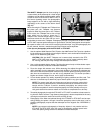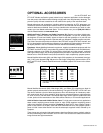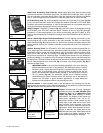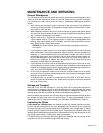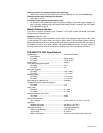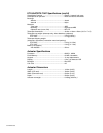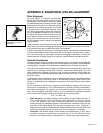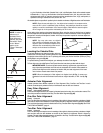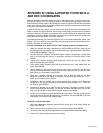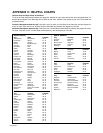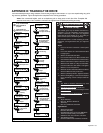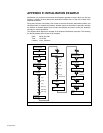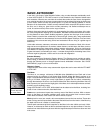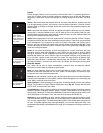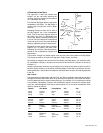
e.g., the Declination of the North Celestial Pole is +90°, with Declination South of the celestial equator
indicated with a “–” sign, e.g., the Declination of the South Celestial Pole is –90°. Any point on the celes-
tial equator itself which, for example, passes through the constellations Orion, Virgo, and Aquarius, is
specified as having a Declination of zero, shown as 0° 0' 0".
All celestial objects are specified in position by their celestial coordinates of Right Ascension and Declination.
NOTE: Since the second object (i.e., the object to be located) is in constant motion,
once the R.A. circle is calibrated (step 2 above), the telescope should be moved
rapidly to read the coordinates of the second object. Otherwise the second object
will no longer be in the position indicated by the R.A. circle.
Using setting circles requires a developed technique. When using the circles for the first time, try hopping
from one bright star (the calibration star) to another bright star of known coordinates. Practice moving the tel-
escope from one easy-to-find object to another. In this way, the precision required for accurate object loca-
tion becomes evident.
NOTE: You may also enter an object's
R.A. and Dec coordinates using the "User:
Objects" option of Autostar's Object menu.
Autostar then automatically slews the tel-
escope to the entered coordinates.
Locating the Celestial Pole
To get basic bearings at an observing location, take note
of where the Sun rises (East) and sets (West) each day. After the site is dark, face North by pointing your
left shoulder toward where the Sun set. To precisely point at the pole, find the North Star (Polaris) by using
the Big Dipper as a guide (
Fig. 28).
For precise tracking of astronomical objects, your telescope should be Polar aligned.
To Polar Align using the #883 Deluxe Field Tripod, follow the instructions provided with the tripod.
IMPORTANT NOTE: For almost all astronomical observing requirements, approximate set-
tings of the telescope’s latitude and Polar axis are acceptable. Do not allow undue attention to
precise Polar Alignment of the telescope to interfere with your basic enjoyment of the instru-
ment. In those unusual cases where more precise.
NOTE: When the telescope is Polar aligned, the Vertical Lock (6, Fig. 1) serves as a
Declination Lock and the Horizontal Lock serves as a Right Ascension, or R.A. Lock (
9, Fig.
1).
Autostar Polar Alignment
Autostar provides three different methods for Polar Alignment: Easy, One-Star and Two-Star. In each
method, the telescope is pointed at Polaris, which Autostar uses the star as a reference.
Easy Polar Alignment
Level: Intermediate to Advanced
Polaris and two alignment stars are chosen by Autostar based on the date, time, and location entered. The
rest of the procedure is identical to the Easy Two-Star Alt/Az: Alignment
(Fig. 30).
One-Star Polar Alignment
Level: Advanced
Polar Two-Star Alignment requires some knowledge of the night sky. Autostar provides a database of bright
stars and one star from this database is chosen by the observer for alignment. Polaris is chosen by Autostar.
The rest of the alignment procedure is identical to the Easy Two-Star Alt/Az: Alignment
(Fig.29). See “EASY
TWO-STAR ALIGNMENT,” page 14.
Two-Star Polar Alignment
Level: Advanced
Polar Two-Star Alignment requires some knowledge of the night sky. Autostar provides a database of bright
stars and two stars from this database are chosen by the observer for alignment. Polaris is chosen by
Autostar. The rest of the alignment procedure is identical to the Easy Two-Star Alt/Az: Alignment
(Fig. 30).
See “EASY TWO-STAR ALIGNMENT,” page 14.
Polaris
Polaris
Fig. 29: Polar One-Star
Alignment.
Fig. 30: Polar Easy and Two-
Star Alignment.
Polaris
Little Dipper
Big Dipper
Cassiopeia
Fig. 28: Locating Polaris.
IMPORTANT
NOTE: In order to
select any of
Autostar's three
Polar Alignment
options, you must
first select "Polar"
in the "Mount"
option of the
"Setup: Telescope"
menu.
32 Appendix A



